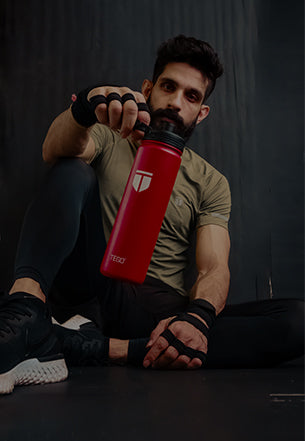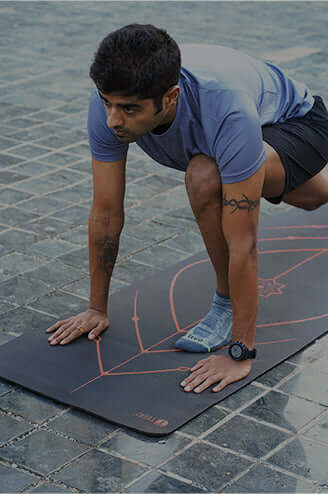For the regular gym-goer, conventional resistance training involves staples like barbells, dumbbells, body bars and resistance bands. This isn’t quite the case with fitness trainer Nithin Jayaraj, whose idea of a full-body workout is to use tools that date back millennia. Once used as weapons by warriors of centuries past, the mudgar (Indian club), gada (Indian mace) and sumtola (Indian barbell) later found their way into the akharas of India. Even today, they remain essential tools in the Pehlwani or Kushti wrestling tradition.
In recent times, an increasing number of people across the world have been turning to similar tools rooted in ancient cultures. The gains from this alternative approach to body conditioning include noticeable improvement in grip strength, mobility and an increase in overall physical strength.
A proponent of this primal style of training, Nithin, started practising in 2018 when he left a desk job in Dubai to return to his hometown in the south of India. Born in India and raised in the glittering emirate, he had always led a fit lifestyle with a focus on weightlifting and Crossfit. It was only upon returning to India that he really began to experiment with traditional tools. Based out of a little village in Kochi, he has long forgone the confines of a gym for the obvious benefits that come with training in the outdoors.

Nithin devises his own variations for the mudgar, sumtola and gada for the many clients who swear by his style of training. He also crafts his own tools using locally sourced mahogany wood. While the variations for the sumtola (wooden barbell), mudgar (wooden club) and gada (wooden mace) might differ, the movements are similar in that they involve swinging as opposed to conventional lifting. Whether it’s a new variation or tool, Nithin tries everything on himself before he makes it available to others.
Following an approach of natural, whole foods based nutrition, Nithin knows much about eating locally and seasonally. When he’s not working out with his clients, he oversees the family business of farming — alluding to his social media moniker ‘The Shredded Farmer’. Over on Instagram, he keeps his growing community of traditional tool practitioners engaged through daily posts on variations, workout guides, and the occasional but informative nutrition posts. Nithin took us through the ins and outs of his primal training techniques over a freewheeling video chat at home in Cochin.
Excerpts from the interview..
How do workouts with these tools differ from conventional weightlifting?
The most beneficial part about working with these tools is that these workouts focus on your joints, making them stronger and more flexible. When you use these tools, your movements are three-dimensional. On the other hand, conventional weight training focusses on muscle contraction through two-dimensional movements. Working out using these traditional tools improves one’s joint strength and mobility, and although you can expect muscle growth, the development is more aesthetic and in accordance with your height. You will not get built like a body builder, but at the same time your mobility will be better as you have better body balance, stance and grounding. The weight of these tools is not as important as the number of repetitions. Core engagement is key when doing the variations.
What are your daily workouts like?
I always work out with every one of my clients. I also work out in the outdoors and have never worn shoes to workout. You get the sun and fresh air, and by being barefoot, you get a lot of circulation. I use a 5kg mudgar and an 8 kg gada on a regular basis. But when I want to test and push myself on some days, I can go up to 20 kgs with the mudgar and 25 kgs with the gada. Of course, there are basic variations but I try to come up with my own variations to make it more of a whole body workout and not just an upper body workout. On my website you’ll notice that I sell tools that weigh 10-12 kgs at the most. I don’t promote anything heavier than this.
Tell us more about your clients and how they have benefitted from this style of training.
Right now, I’d say it’s 50-50. Prior to this, there were a lot of women who wanted to try this style of training. Lately, I’ve been noticing that men are becoming very interested in it. Women who practice yoga feel that their upper body is not as strong as their lower body. After working out with these tools, they realise they can build strength in their arms. I always remind my clients that transformation is consistent and if you are doing it on a daily basis, you will definitely feel it within a month. But, if you want to actually see the change, it will take you 3-6 months to really see a noticeable change.
What’s your idea of eating healthy?

I get my nutrition from my food and I believe in eating locally and seasonally. I follow a non-vegetarian diet, but because I live in the countryside, I tend to find it easier to eat a vegetarian diet. I’m lucky because my nutritionist is my grandmother. I don’t take protein shakes or supplements. My milk gives me my calcium, my fish gives me collagen and Omega-3, and I get my protein from lentils, bananas and lamb. I don’t even focus on protein intake immediately after workouts. I just eat a normal diet which is nutritious.
You have to listen to your body. Overeating will get you lazy and moody. Eat how much your body needs and if you’re going to eat well, you need to work out. You also need rest. These three aspects go hand in hand — train hard, eat well and rest well. Eating in a controlled manner is important because you will have more energy and your senses will function more optimally.
What are your learnings from these tools?
I stick to these workouts and don’t even think of going back to conventional weights because the more I do these three-dimensional movement workouts, my whole body gets worked out and I don’t ever feel stiff. My movements are fluid and my body balance has always been at its best. I feel very light and I can feel that these workouts are good for my joints.
What next?
I am planning to launch a teachers’ training programme very soon. My syllabus is ready. After the next monsoon, if the situation permits, I am hoping to launch a fitness bootcamp where a limited number of people can register at a time. I will also be working out with them. They can work out for 10 days or 20 days while they stay here and eat the food we eat with activities planned for the entire day. It will be luxurious and personalised to each person’s requirements. They need to remember that you won’t get 24 hours room service, it’s DIY. At the end of the day, it’s a bootcamp with a maximum of 3-4 clients at a time.







